Wild turkey is likely to be tougher than farm-raised birds. Wild turkeys also have less breast on them because they have not been pumped with hormones or kept consistently fed with a fattening diet. Wild turkey also has a somewhat gamier taste. Wild turkey does present some differences when cooking and eating that shouldn’t be ignored.
Clean your bird. If the turkey is not skinned, skin it, cut off its head and feet, and clean out the intestinal cavity. Or follow Step 2.
As an alternative, boil a very large pot of water. The pot should have enough room so that when the turkey is added, the water doesn't overflow. It’s best to do this outside. Dip the turkey in the boiling water, which allows the feathers to be easily plucked out, and then cut off the head and feet at the joint. Clean out the intestinal cavity after this method, also.
Consider meat tenderness. Because the breast is smaller, it may get tougher quicker when cooking. Avoid this by slicing off the outer layer of muscle on the turkey breast.
Bake the wild turkey just like a regular turkey, but pay extra attention to basting to keep it from drying out. You can also place the turkey inside a special ovenproof plastic bag; however, some people have complained that these bags cook wild turkey too fast. Set the oven to 350 degrees, and cook the turkey about 15 minutes for each pound. The turkey is done when the temperature in the thickest part of the thigh is 165 degrees, as measured by a meat thermometer.
Deep-fry your wild turkey as an alternative. This keeps the turkey moist, but you must be very careful, and this should be done outside because it can be very dangerous. When deep-frying, make sure the fryer doesn’t have so much oil that it spills out when the turkey is added.
Related Articles
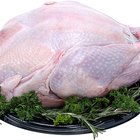
Should I Cook My Turkey if It Is Smelly?

How to Grill Skinless Pheasant
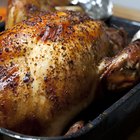
Can You Cook a Turkey Halfway & Finish ...
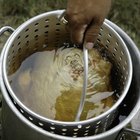
How to Deep-Fry Turkeys and Ducks

How to Butcher Squab
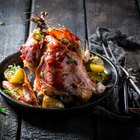
How to Prepare & Cook Wild Pheasant
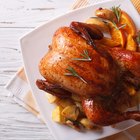
Is It Safe to Leave a Turkey at Room ...
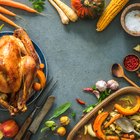
How to Keep a Smoked Turkey From Drying ...
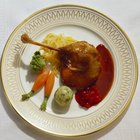
How to Cook a Wild Goose in a Slow ...

How to Cook Skinned Wild Goose
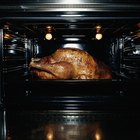
Can I Cook a Whole Chicken Without ...

How to Roast Turkey in a Crock Pot

How to Keep Turkey Moist

What Part of Beef Is Kosher?

How to Cook a Turkey From Frozen
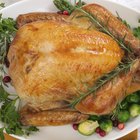
How to Defrost a Turkey
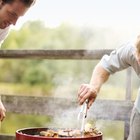
How Hot Are You Supposed to Cook ...

How to Cook Turkey With Apple Juice
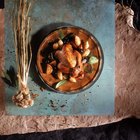
The Best Way to Cook Cornish Hens
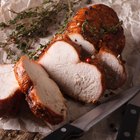
The Best Way to Cook a Small Turkey ...
Tips
- Watch out for shotgun pellets when eating wild turkey.
Writer Bio
Larry Amon has been working in the computer field for more than 10 years and has experience writing scripts, instructional articles and political commentary. He has been published online, as well as in "NRB Magazine" and "Delmarva Youth & Family." He started a nonprofit media organization in 2000.